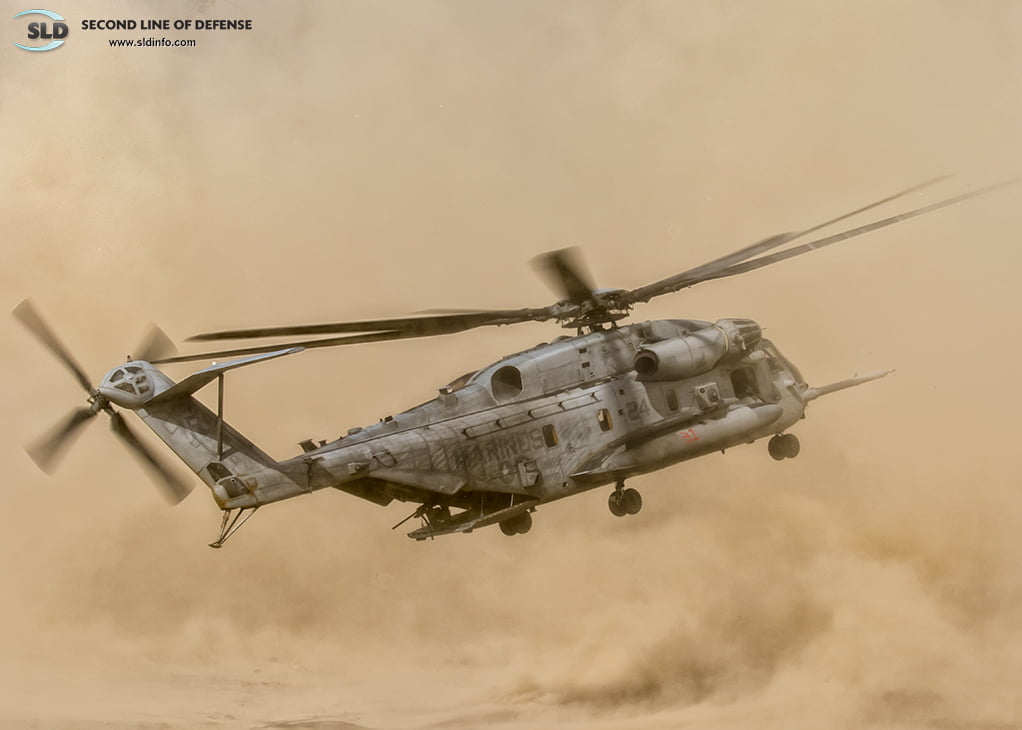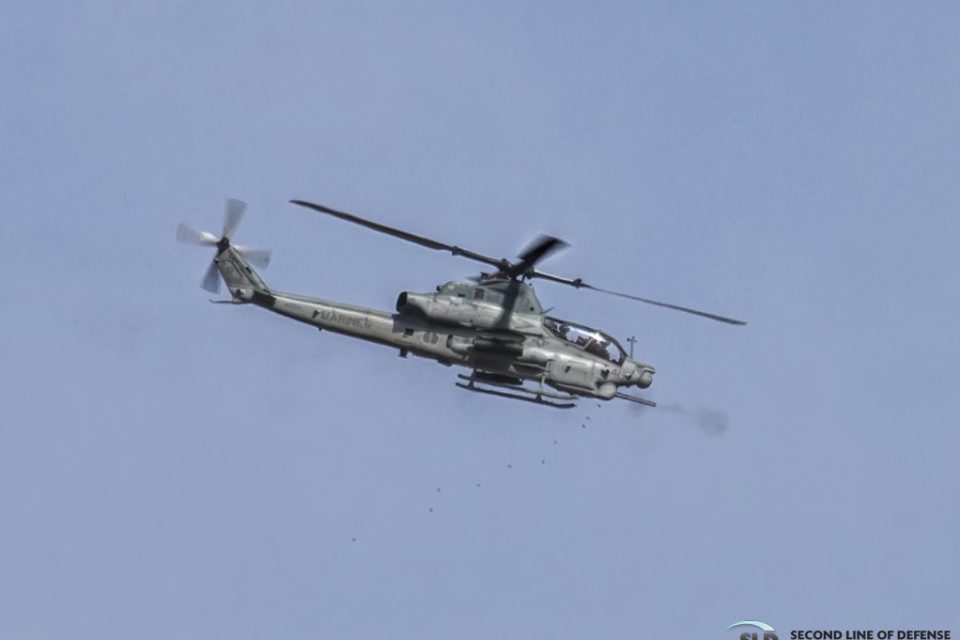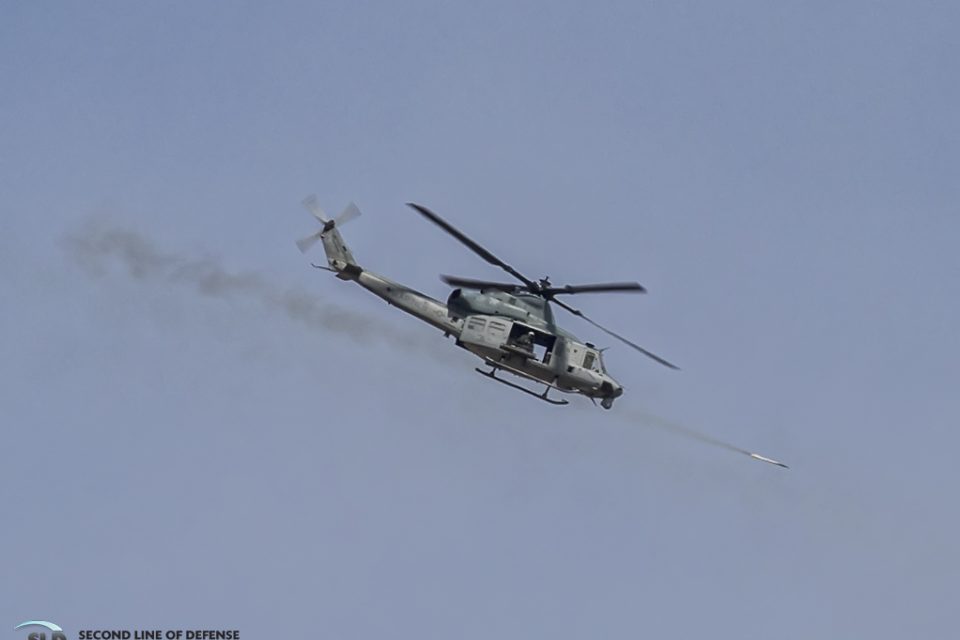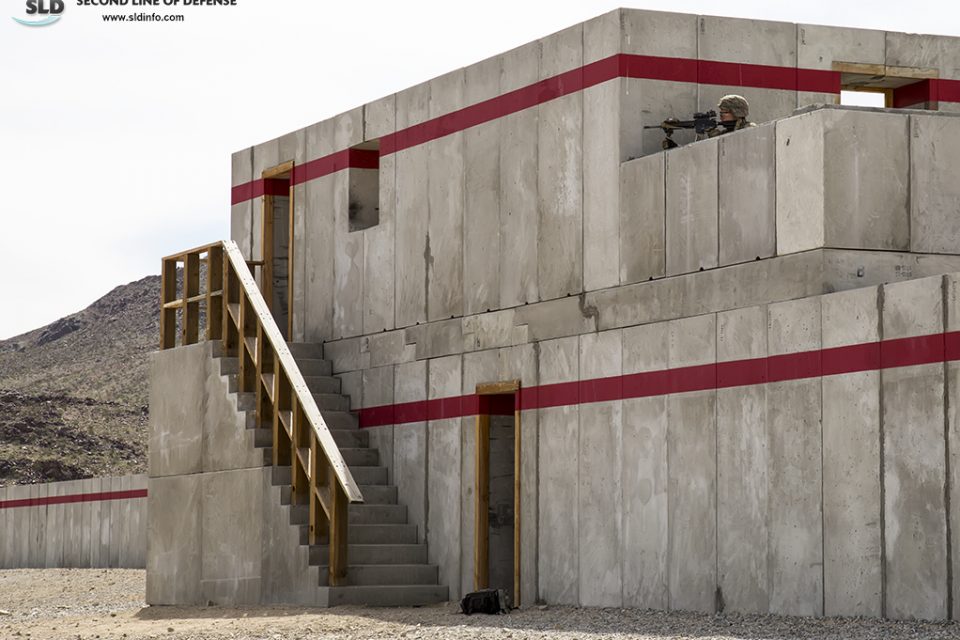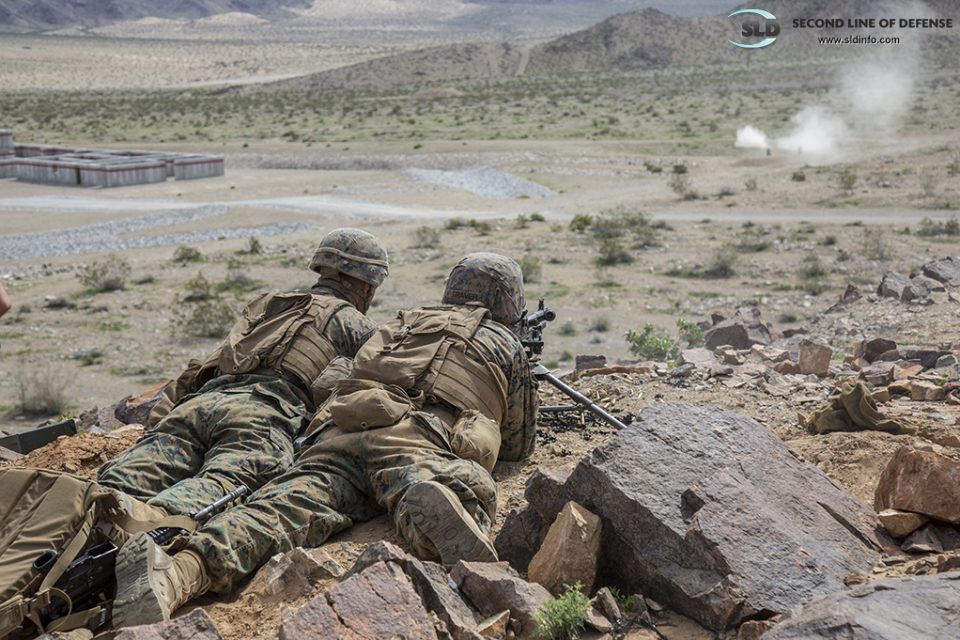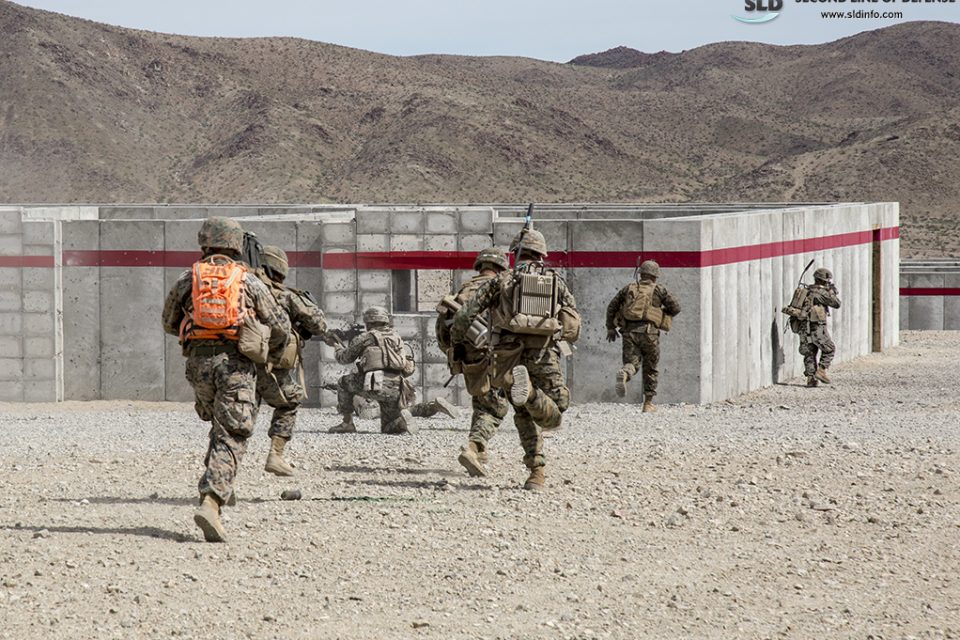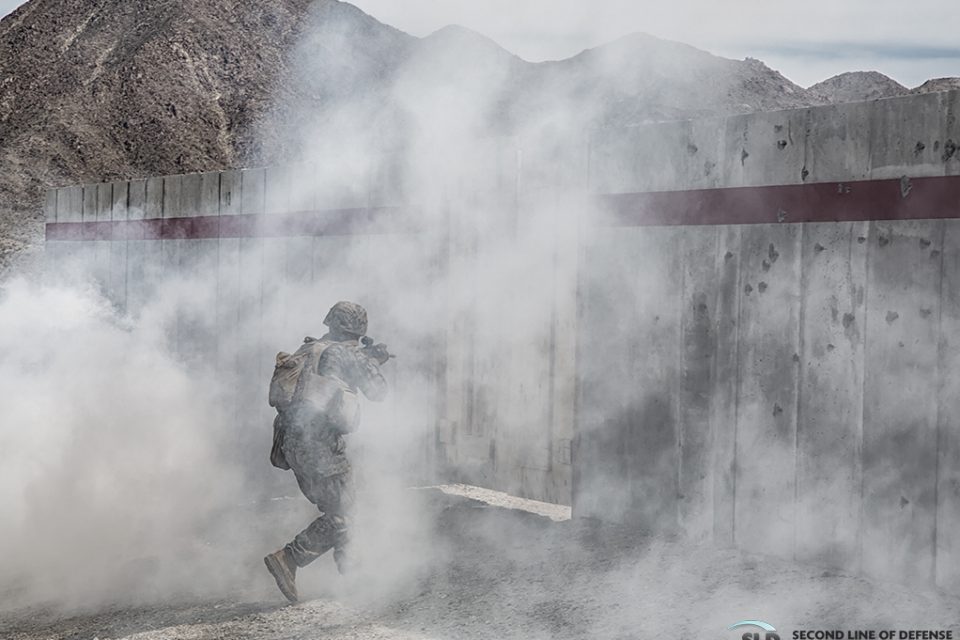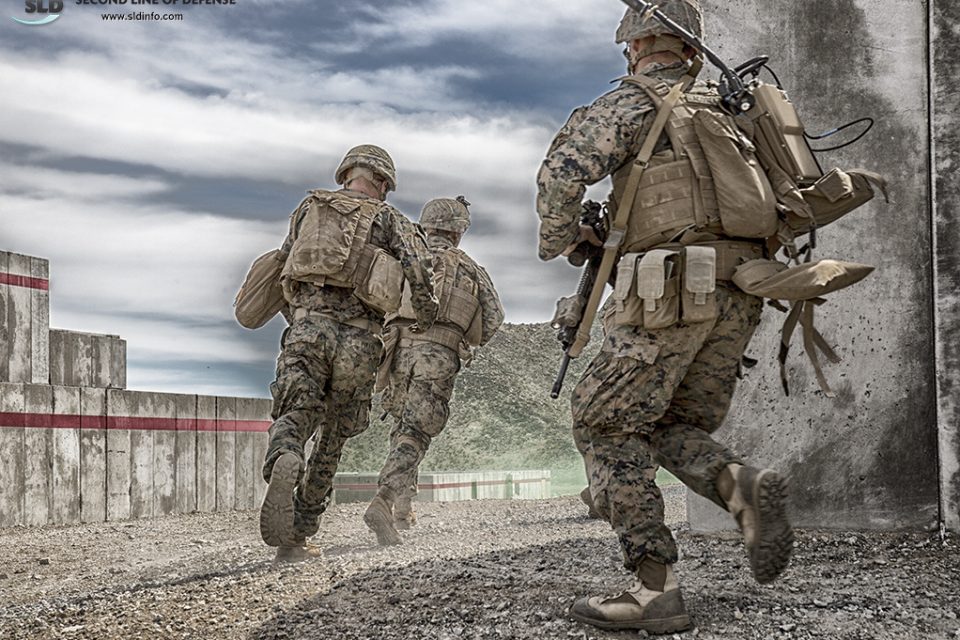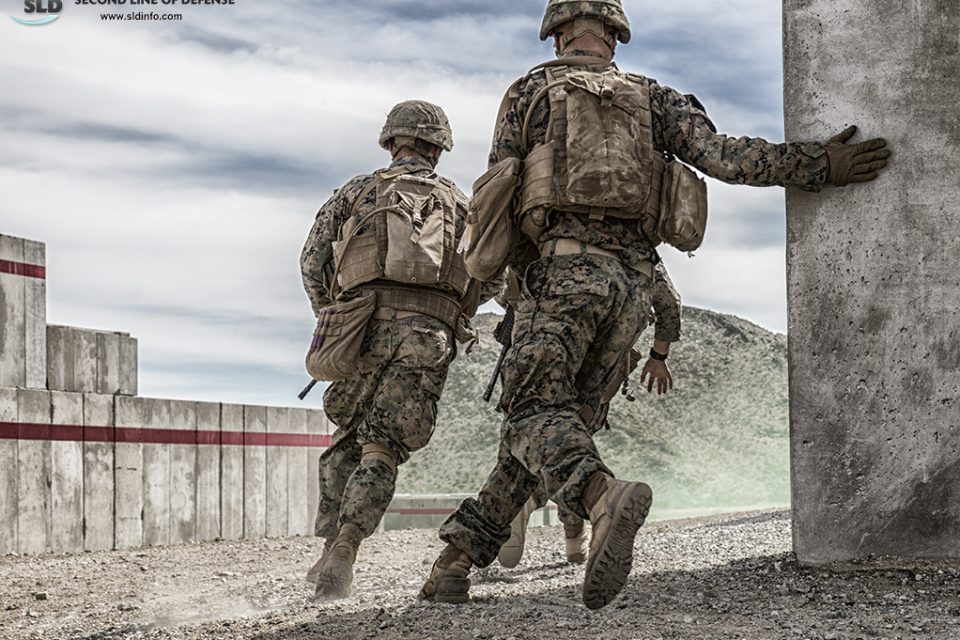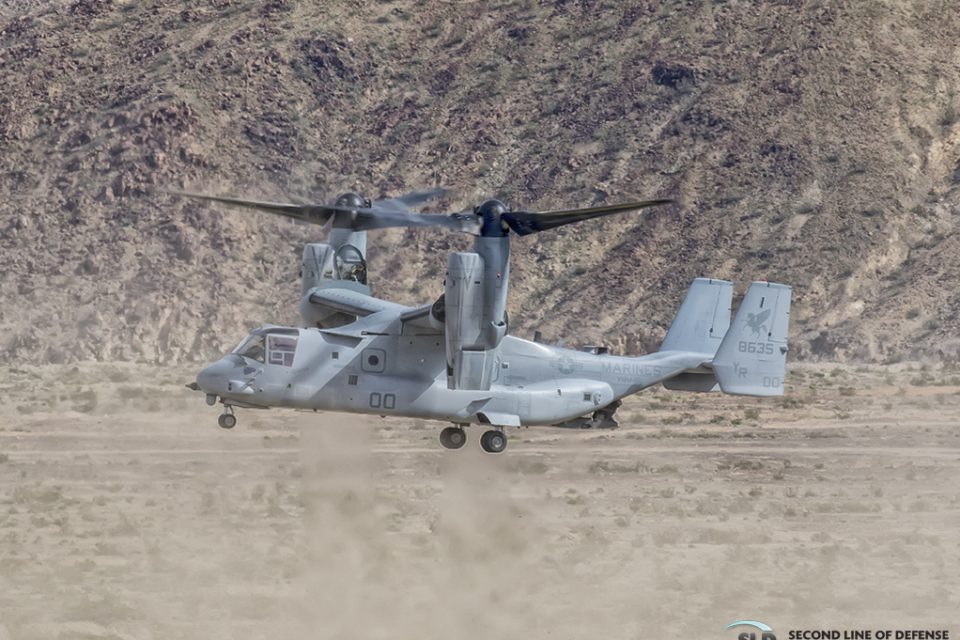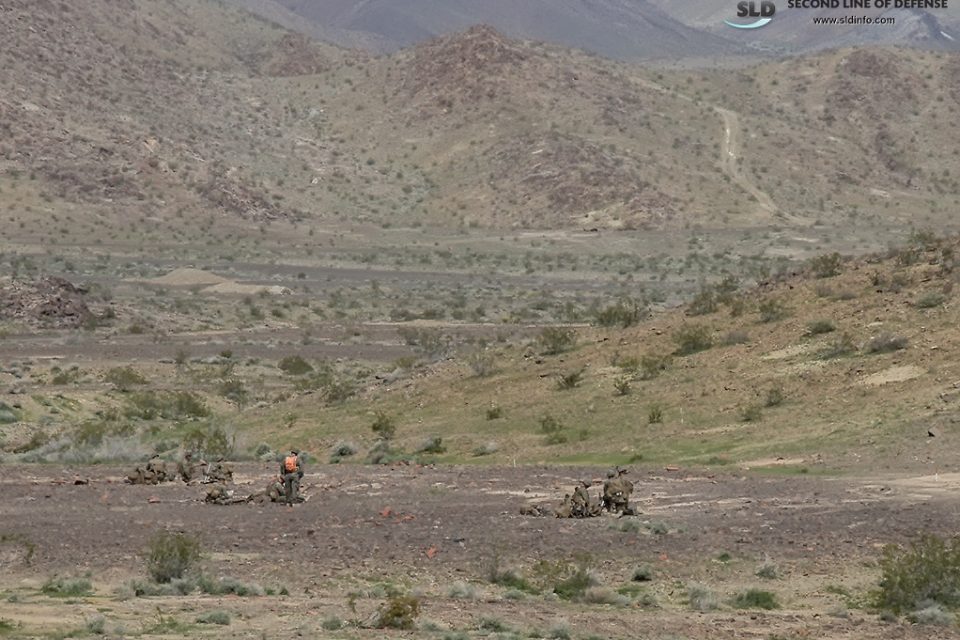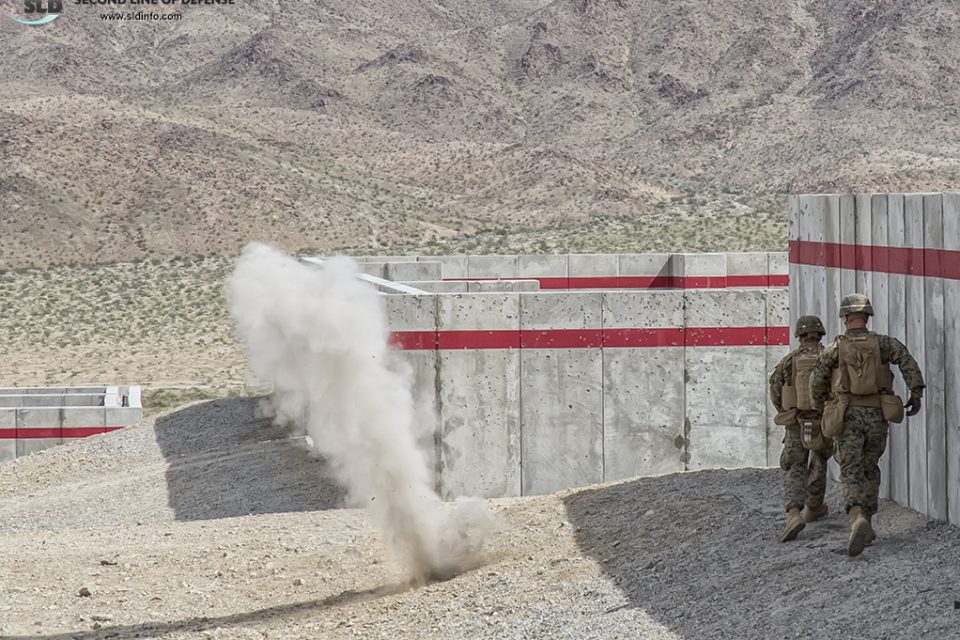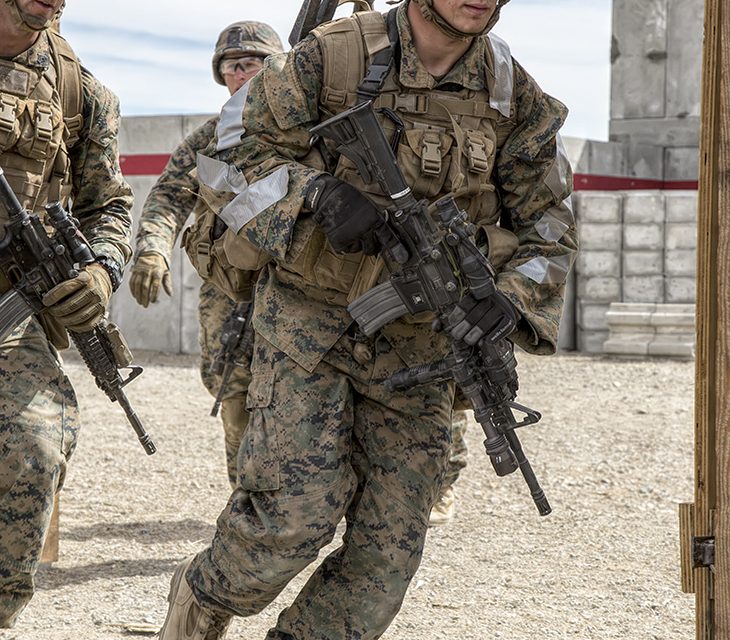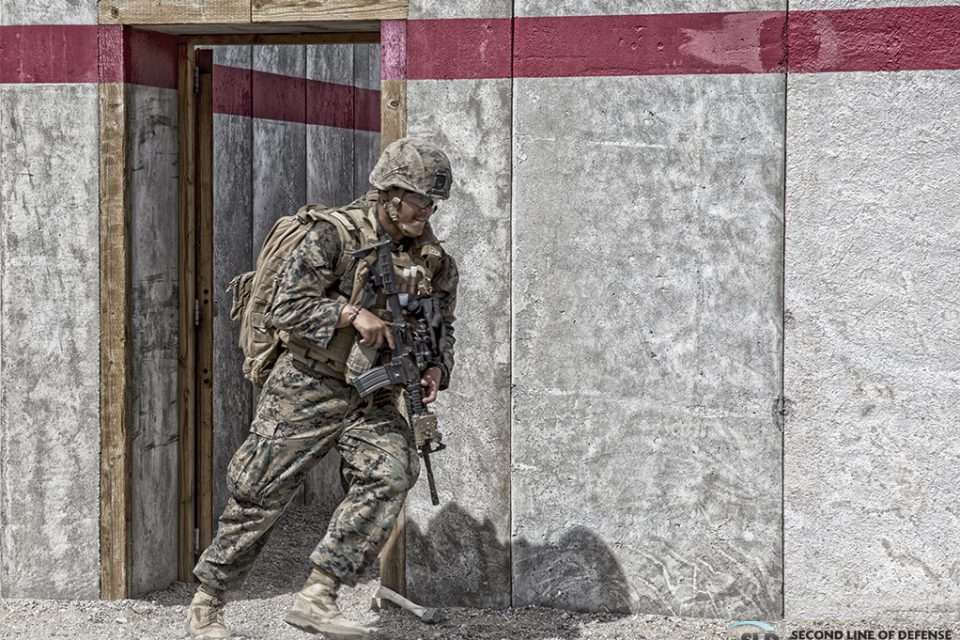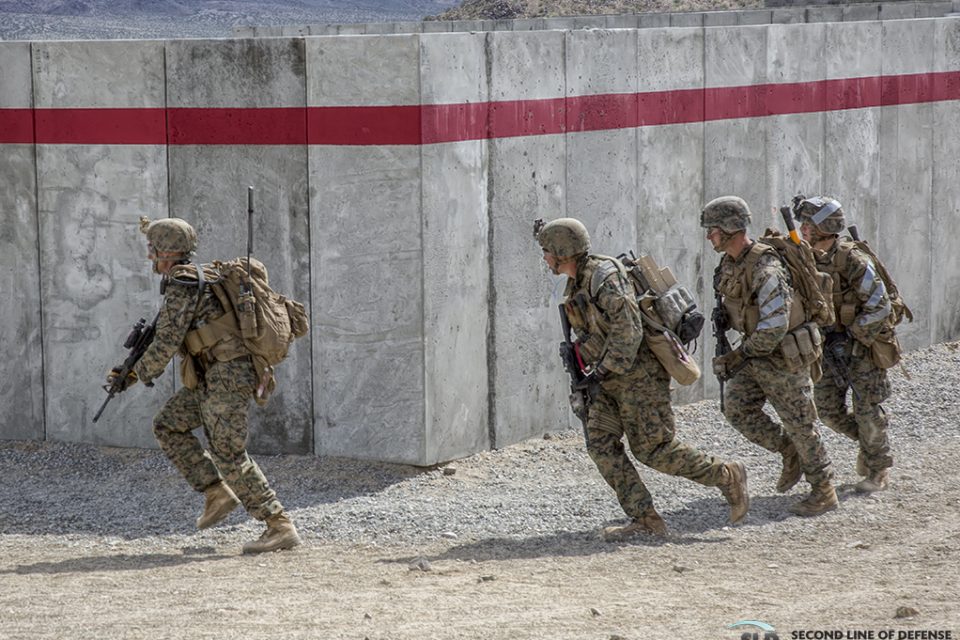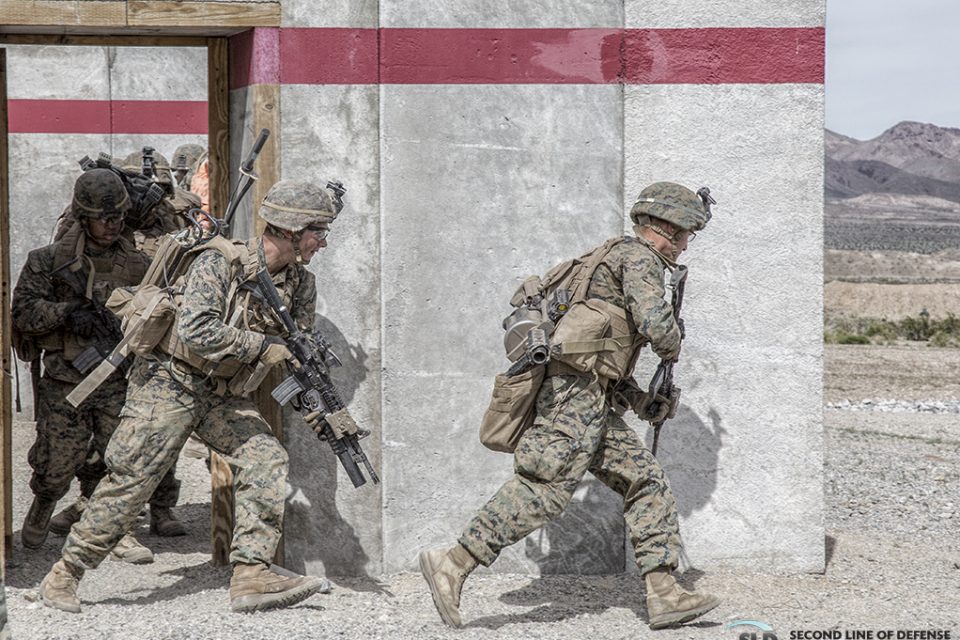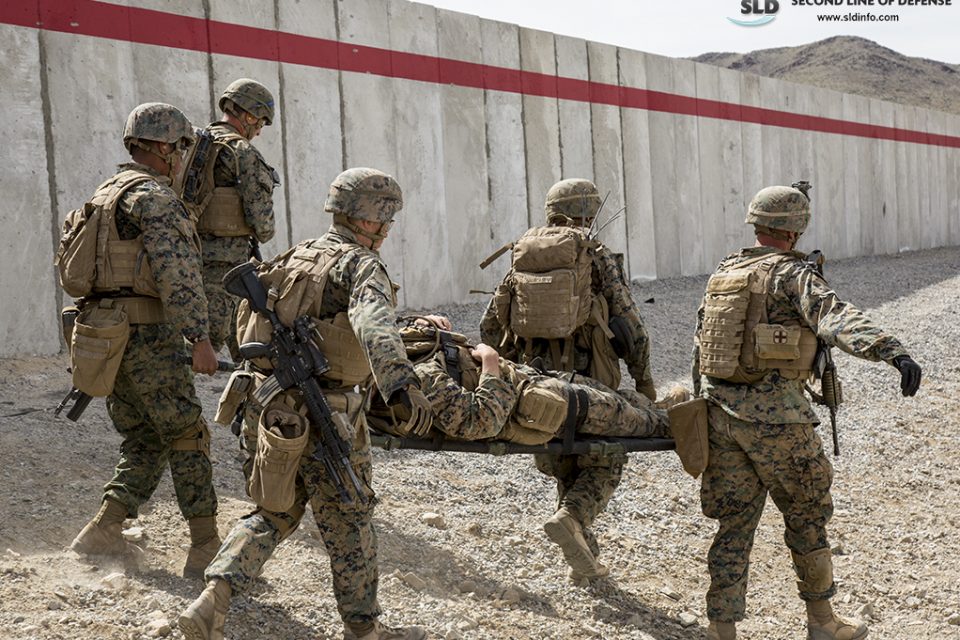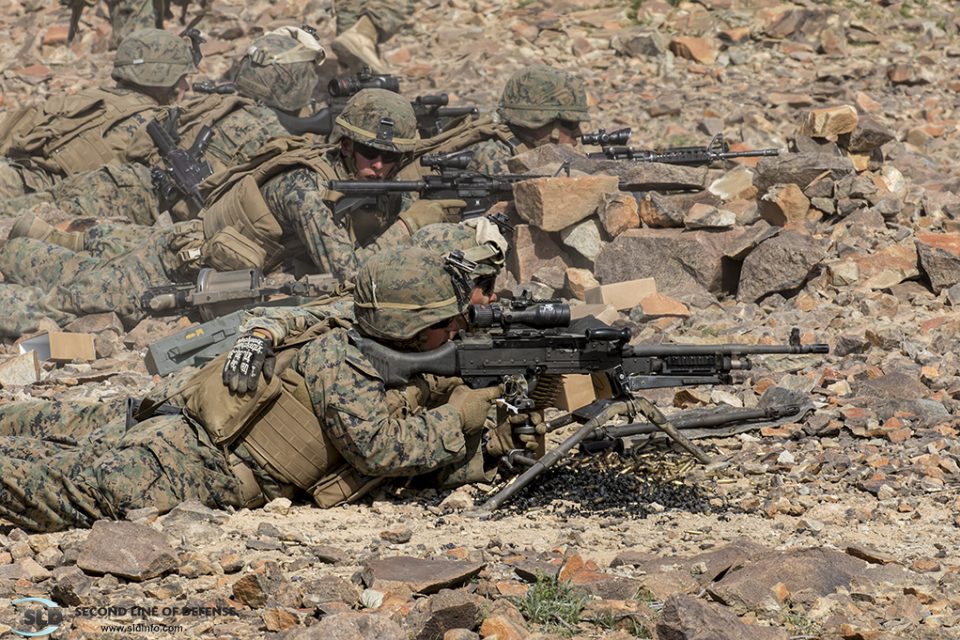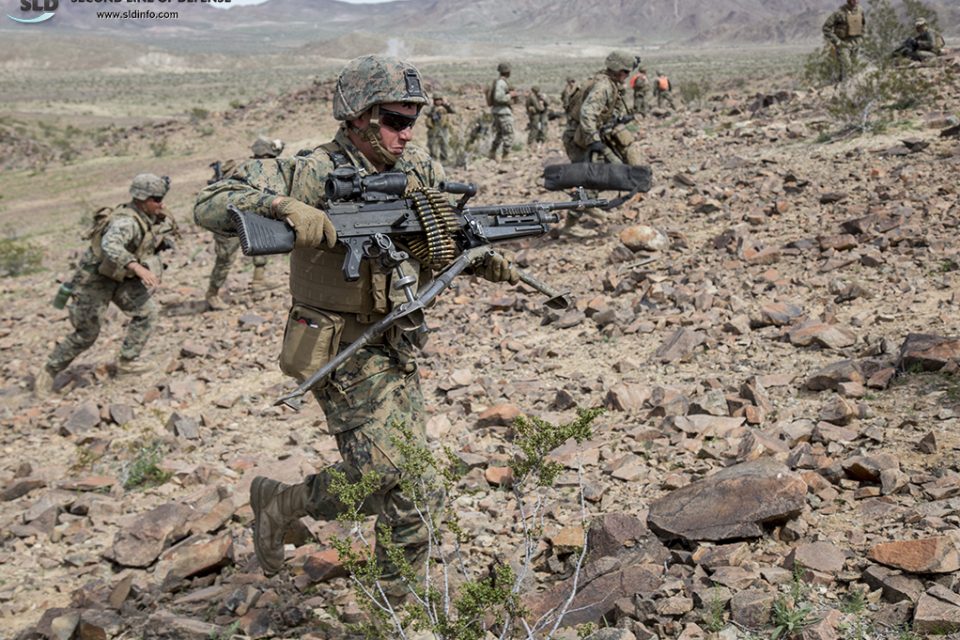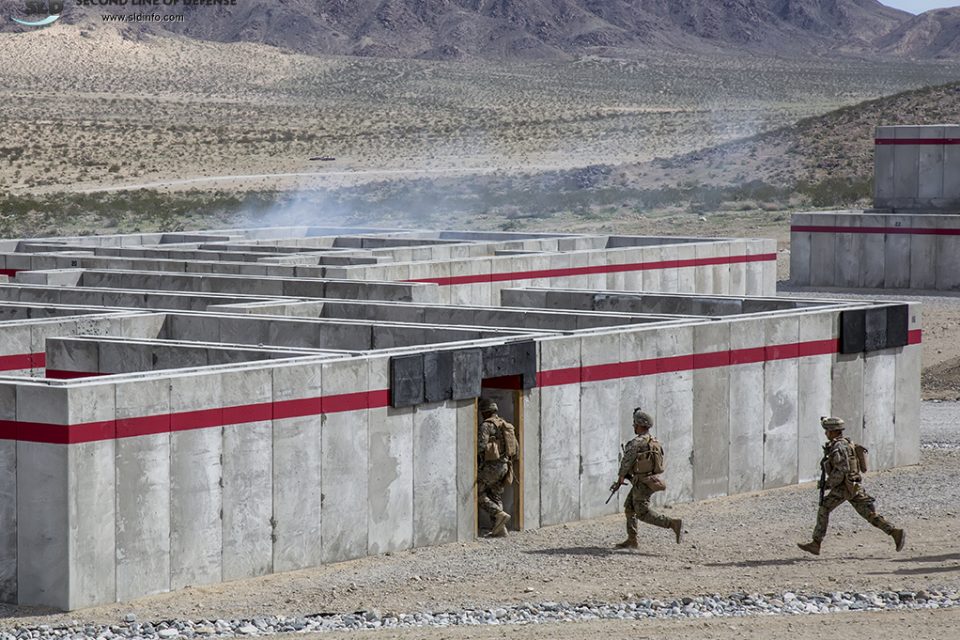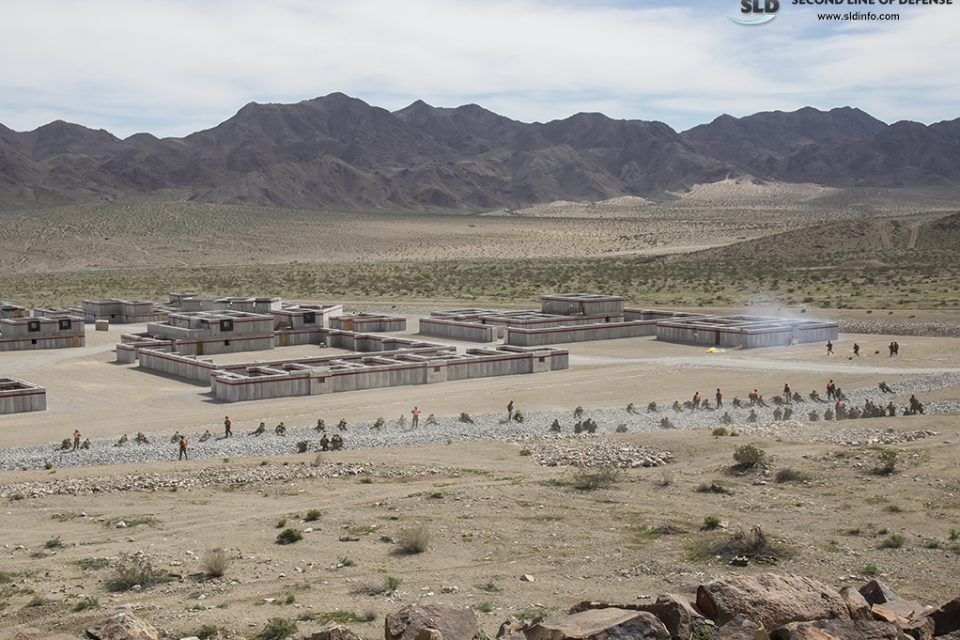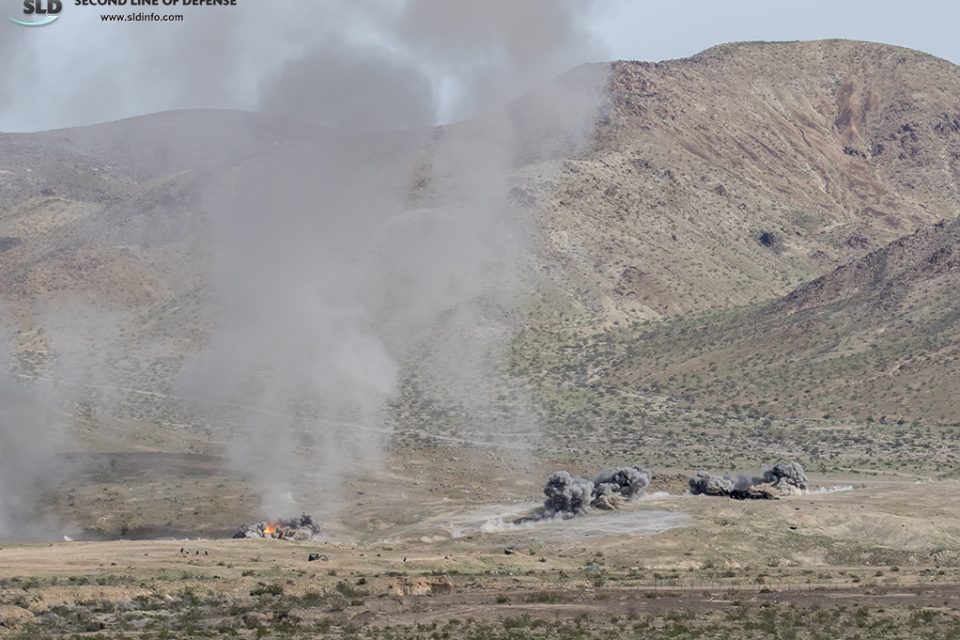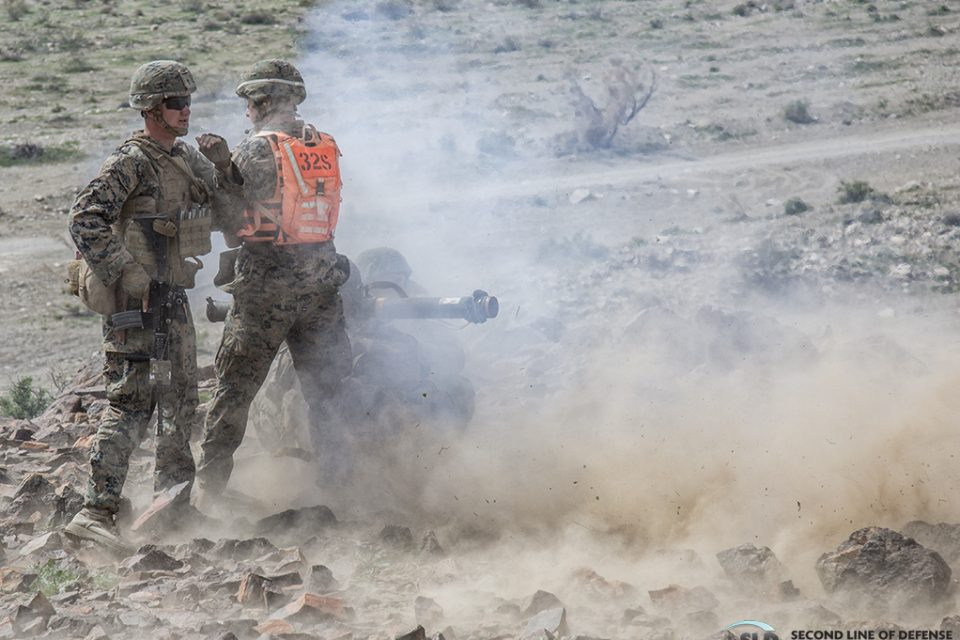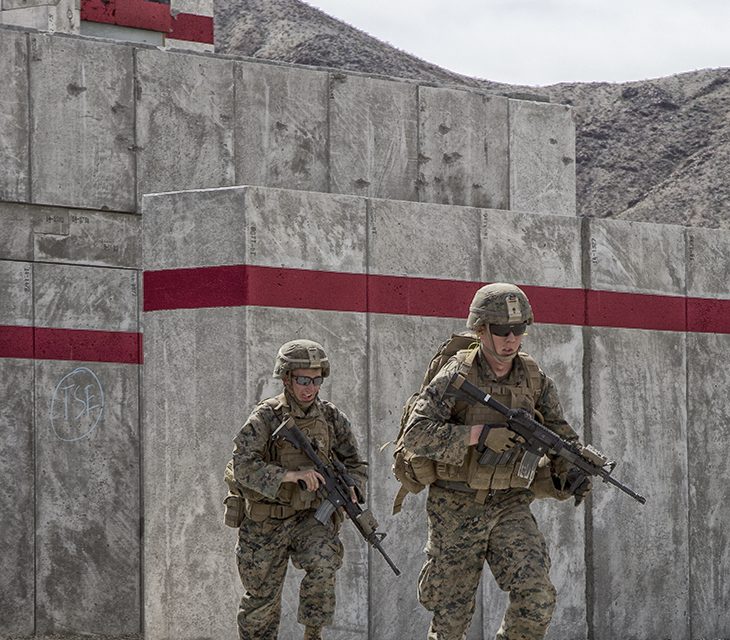2017-03-19 By Todd Miller
Todd Miller of the Second Line of Defense joined the 15th Marine Expeditionary Unit (MEU) for live fire Realistic Urban Training (RUT).
The RUT is one mission set of thirteen that must be mastered prior to deployment.
The 15th MEUs workups require about 6 months of aggressive training (crawl-walk-run) prior to deployment this summer with the USS America Amphibious Ready Group (ARG).
The live fire RUT took place at the Marine Corps Air Ground Combat Center (MCAGCC), Twentynine Palms, CA.
The sound from the unseen jet at high altitude is disconcerting, yet the muffled explosions seem to indicate it is focused on distant targets.
The uneasy peace that remains is soon shattered.
The distant “whump, whump” of artillery gets the undivided attention of the enemy within the small town.
Within seconds, their fears are realized as the shells explode on the perimeter of their refuge.
The earth trembles, it is their judgement day.
The fear is palpable as the artillery picks up pace and pounds the towns perimeter like a well beaten drum.
The noose is in place.
With each artillery shell the earth shudders, and those within hardly note the thundering rotors.
The approaching UH-1Y Venom and AH-1Z Viper identify threats and provide air support.
Rockets and steel rain from on high, targeting anything that threatens the incoming MV-22 Ospreys and CH-53E Super Stallions laden with the combat ready 15th MEU.
The MV-22s approach and subsequently disappear in billowing clouds of dust kicked up by rotor wash as they touch down.
No sooner have they departed when the heavy CH-53Es arrive straight in, launching flares to divert enemy missile attack.
The CH-53Es disappear in clouds of dust no smaller than the MV-22s.
15th MEU Training on the Way to USS America Deployment from SldInfo.com on Vimeo.
As difficult as the dust is, it provides very effective cover for man and machine during the short minutes in the ground.
As the dust slowly clears, the first glimpse of Marines pouring off their rides is made.
The numbers are small, but formidable and their punch will take more than the wind out of the enemy.
The Marines have been here before and there is no question their tactics or procedures.
Their rigorous training to date generates the correct response even as they land and face defensive fire.
Enemy snipers have taken positions on the perimeter of town to attack the Marines on their approach.
No one desires to become a casualty at this early stage.
Battalion leadership barks out instructions between commands, Get down!
Get down! Suppressing Fire!
Marines methodically eliminate immediate threats and assemble for the assault.
Mortar teams establish position and begin to rain down mortars closer to the city – within the artillery perimeter.
The noose tightens.
On command the Marines rush to firing positions and a wall of steel rain showers the approach to the city.
Enemies (“mannequins”) appear in windows and on the perimeter and are quickly neutralized.
The adversary attempts to mobilize armor against the Marines and with a tremendous clap, an anti-tank missile terminates the threat.
A group of Marines move methodically towards the town.
Suppressing fire is unrelenting even as the firing lanes are altered to avoid hitting friendlies. Grenades are tossed, and Marines move from cover to assault in synchronized fashion.
Explosive charges breach doors, flash bangs stun those inside and heavy machine gun fire terminates threats.
Each corner is searched in methodical fashion.
Marines teaming to ensure all are covered.
Building complex after building complex fall to the assault force.
Instructors working side by side the Marines teach real time lessons; “you are taking fire, react!” “you stepped out of cover and did not note the sniper in the distance – you are hit,” “you stepped on an IED – you are down.”
Random and unique threats appear throughout the exercise.
Those not discerning the subtle clues left in the dirt become casualties of simulated IEDs and booby traps.
Marines designated injured to one extent or another must be moved to a single protected position prior to evacuation.
Fortunately, there are no real enemies in this dynamic, yet carefully planned and executed classroom.
As impressive as this day is to an outsider, it is a typical day in the 15th MEUs workups leading to deployment.
Given RUT is only one mission of 13 the MEU will master, this day is the norm in the months working up to deployment.
Tomorrow they will repeat in another setting to hone these skills, and learn more – until they activate like muscle memory.
The Marines have secured the town and reassemble for extraction.
It has been a long, hot, physical day, but the Marines of the 15th MEU appear no worse for wear.
This is the path to create a forward deployed, highly capable Marine Expeditionary Unit fit to respond to a wide variety of crises within hours.
Once deployed to the Pacific theater this summer, the 15th MEU will live and breathe in a constant state of readiness for 6 months (or longer).
This deployment will be to a Pacific filled with uncertainty, be it the North Korean ballistic missile threat, China’s militarization of the South China Sea, or the war on terror that has roots in the area. Given the Trump Administrations signals on the foreign policy challenges that wait – likelihood is higher than typical that the MEU be called upon to exercise any of their mission set.
For those that reflect, it is a sobering thought.
These young Marines have put themselves forward as America’s shield and sword, helping hand – and hammer. “
Thank-you for your service” takes on new meaning as one realizes that it is our own sons and daughters who we trust to carry the leading edge of American diplomacy.
I am honored to have spent the day in their company.
The Second Line of Defense expresses its gratitude to; 1st Lt Francheska Soto, Outreach Officer & Sgt Paris Capers, Mass Communication Specialist, I Marine Expeditionary Force (1st MEF); 1st Lt. Maida Zheng, Public Affairs Officer, 15th Marine Expeditionary Unit; the entire 15th MEU; and the trainers and support team at the MCAGCC.
Editor’s Note: The 15th MEU along with other MEUs and MAGTFs are receiving a capability boost from the deployment of three new capabilities.
First, a new generation amphibious ship is where the 15th MEU will deploy from in dealing with threats across the range of military operations. This ship allows for significantly greater support for the assault force and allows the force to operate at greater distance from the area of interest.
Second, the amphibious fleet will operate with the force enhancing capabilities of the F-35, a multi-mission strike, sensor and C2 aircraft all wrapped up into one.
Third, the new CH-53 is coming as well which will significantly enhance as well the capabilities of the insertion force.
The CH-53K as a 21st century air system will add significant capability to the evolution of the amphibious fleet as well, given its capacity for much more efficient heavy lift, which can be delivered to multiple points in the battlespace, faster, and with significantly enhanced integration with the other combat assets.
The aircraft will be able to externally carry nearly three times the current load of the E and offload with much greater flexibility, safety and security.
Given its significantly improved readiness and reliability, greater sortie rates will be generated, coupled with independent triple hook capability, managing logistical throughput will significantly reduce ship to the shore transit time.
https://sldinfo.com/enabling-the-evolving-conops-of-distributed-operations-the-role-of-the-ch-53k/
Learn more about the MEU/ARG
Follow the 15th MEUs workup on Facebook
Editor’s Note: For part 1 please see the following:
15th MEU Readies for Deployment with the USS America ARG (Part One)


